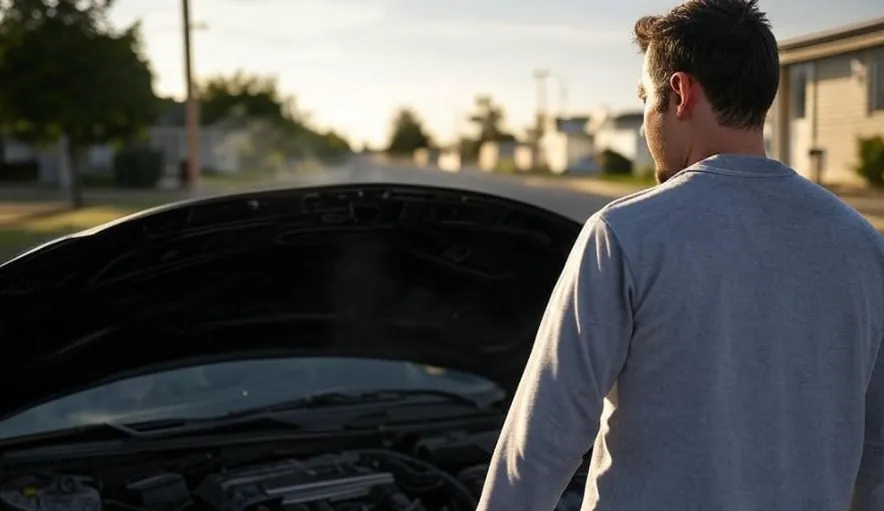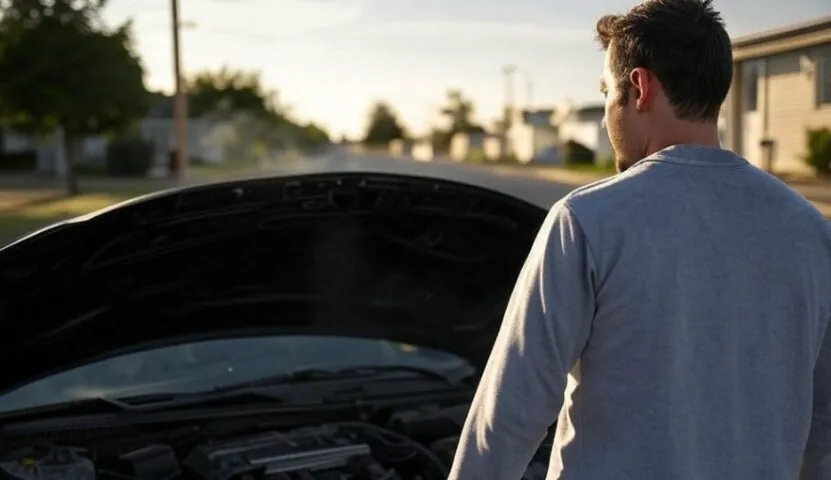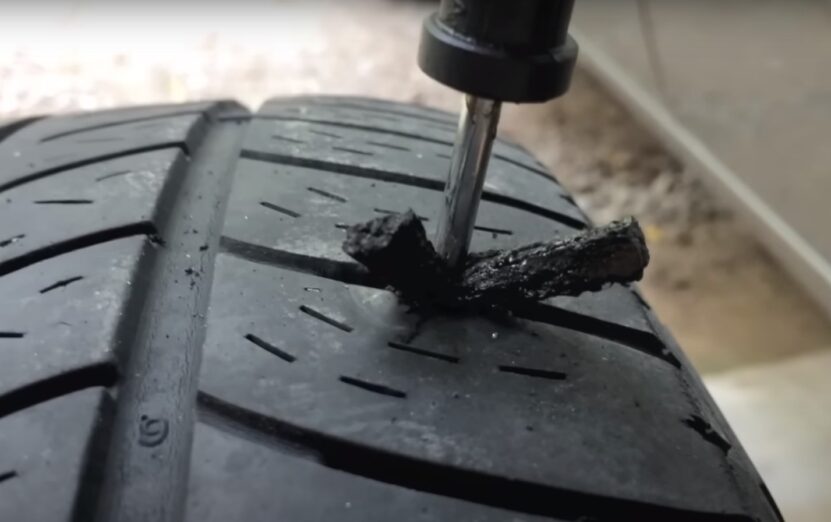
Share Post:
Tire care is essential for vehicle performance and safety, and addressing punctures promptly ensures a smooth and secure ride. Among the many repair options available, tire patching stands out as a reliable and budget-friendly solution. For those wondering how much it costs to patch a tire, the answer depends on whether you choose a DIY approach or professional assistance.
Tire patching offers flexibility, catering to different budgets and skill levels. Whether you handle it yourself or visit a repair shop, this method remains an affordable and durable option for fixing punctures and maintaining your vehicle’s safety.
Table of Contents
ToggleKey Takeaway
- Cost-Effectiveness: Patching tire costs between $40 to $55, including labor and parts, with additional charges for balancing. Despite the initial expense, it offers a durable, long-term solution for tire repair, making it a cost-efficient choice compared to other methods.
- Durability and Safety: Tire patches provide a reliable and permanent repair for punctures, ensuring safety and longevity. When applied correctly, a patch can last seven to ten years, maintaining the tire’s integrity and performance.
- DIY vs. Professional Repair: DIY patch kits are available for $10 to $20, offering a budget-friendly option. However, the effectiveness of a DIY patch may not match that of a professional repair due to potential gaps in expertise and equipment.
- Superiority Over Alternatives: Compared to temporary fixes like tire plugs and sealants, which may cost less upfront but offer limited reliability and safety, tire patches emerge as the superior repair method. They ensure a lasting repair, making them the preferred choice for ensuring vehicle safety and performance.
What Is the Cost?
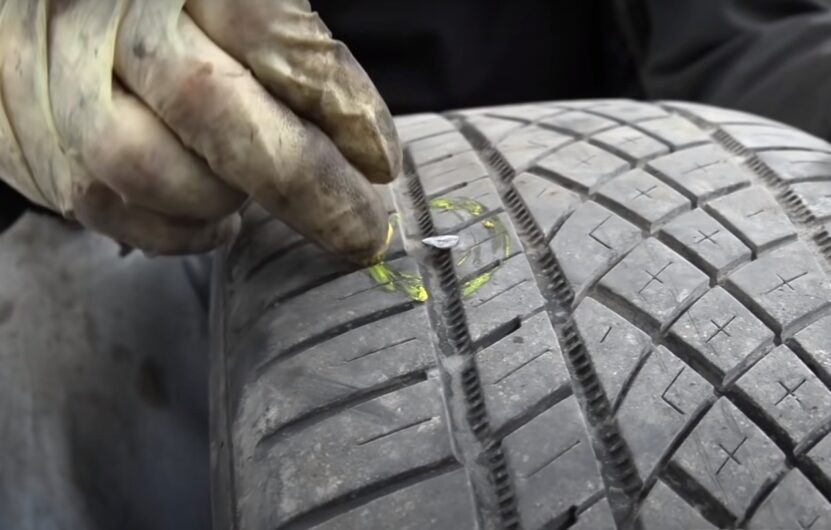
The initial cost of patching a 33-inch tire, including both labor and materials, generally ranges from $40 to $55. Labor charges, which are determined by the repair shop’s hourly rate, often fall between $75 and $130. The repair process, specifically for a 33-inch tire, takes about 15 minutes.
The materials required for the job, predominantly the patch for the 33-inch tire, contribute approximately $6 to the overall expense.
Balancing and Additional Services
After a tire is patched, balancing is crucial to ensure even wear and optimal performance, adding $15 to $30 to the repair bill. This step is essential for maintaining the vehicle’s handling characteristics and preventing future issues such as vibrations or uneven tire wear.
Diy vs Professional Tire Repair Costs.
For those preferring a hands-on approach, DIY patch kits offer a cost-saving alternative, priced at $10 to $20. These kits include all necessary materials but require some expertise and proper tools for a successful application.
Let’s check out the comparison between Professional service and DIY.
| DIY Tire Repair | Professional Tire Repair | |
|---|---|---|
| Cost | – Tire repair kits: $5 to $25 – Additional tools (if needed): $15 to $100 |
– Repair services: $45 to $50 – Potential additional fees for labor and materials |
| Convenience | – Immediate repair if tools are available – Requires personal time and effort |
– Professional assessment and repair – Minimal personal effort required |
| Skill Level Needed | – Basic mechanical skills – Understanding of repair procedures |
– Handled by trained technicians |
| Repair Quality | – Depends on individual skill – Risk of improper repair |
– Generally higher quality – Often comes with service guarantees |
Additional Considerations
- Safety: Improper DIY repairs can lead to further tire damage or safety hazards.
- Time: DIY repairs may take longer, especially without prior experience.
- Warranty: Professional repairs might include warranties, offering peace of mind.
What Are the Different Types of Patches?
When it comes to tire repair, not all patches are created equal. The two primary types employed are plug patches and internal patches, each with its distinct advantages and drawbacks.
Plug-Patch
A hybrid approach that combines a plug and a patch, offering a comprehensive solution by addressing both the tire’s interior and the tread area where the puncture occurred.
This method effectively seals the puncture from the inside while also filling the hole in the tread, providing a robust repair that is considered more durable and reliable than using a plug or patch alone.
The advantage of the plug-patch is its ability to deliver a repair that closely restores the tire to its original condition. However, it requires specialized tools and skills, often making it more suitable for professional application rather than a DIY approach.
Internal Patch
Strictly applied from the inside of the tire, the internal patch covers and seals the puncture area. It’s known for its reliability in creating an airtight repair and maintaining the tire’s integrity.
While internal patches offer a high degree of safety and durability, the process of removing the tire from the rim to apply the patch can be more labor-intensive and typically necessitates professional installation.
What Are Some of The Most Common Tire Repair Issues?
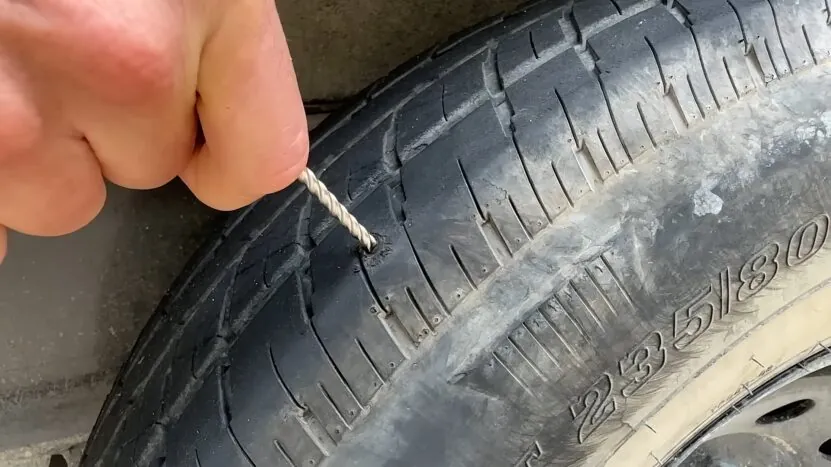
Flat Tire
A flat tire means your tire has lost all its air and, as a result, has gone flat.
Common Causes
- Punctures from sharp objects like nails or glass
- Damage to the valve stem (the small tube where you inflate the tire)
- Sidewall damage from scraping against curbs, road hazards, or possible manufacturing defects
Bead Damage
Cutting it a bit too fine! Front left wheel rim damage at the top of the pic after @alex_albon scraped the wall in FP3: pic.twitter.com/o83rDBKmI0
— Adam Cooper (@adamcooperF1) September 21, 2024
This refers to damage to the part of the tire that grips the rim.
Common Causes
- Improper mounting or removal of the tire
- Hitting a pothole at an awkward angle
Tire Tread Wear
Tread wear means the grooves on your tire, which provide road traction, are wearing down and becoming shallower.
Common Causes
- Regular wear from driving
- Uneven wear due to improper tire pressure, misalignment, or infrequent tire rotations
Why is Tire Balancing Important After Patching?
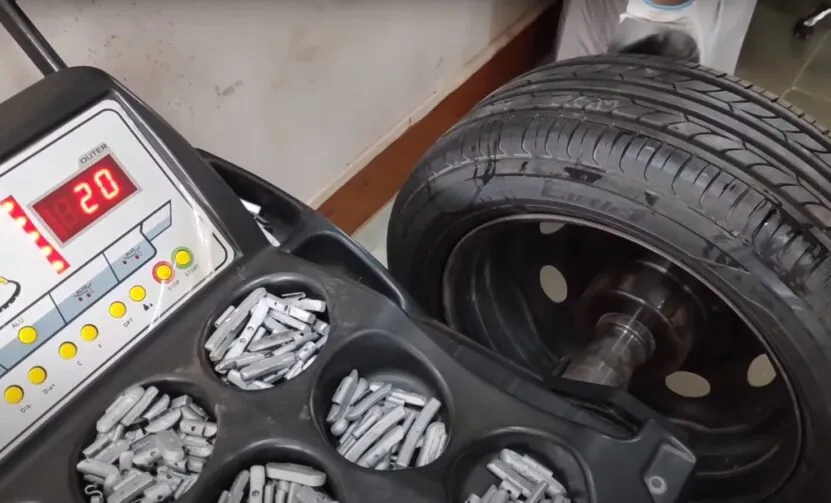
Tire balancing is a critical step following the patching process. This procedure ensures that the weight of the tire and wheel assembly is evenly distributed around the axle.
When a tire is patched, the repair can slightly alter the tire’s balance, potentially leading to uneven tire wear, vibrations, and a decrease in driving comfort and safety. Balancing the tire after a repair minimizes these risks, restoring smooth operation and extending the tire’s lifespan.
How Does Tire Patching Compare to Other Tire Repair Methods?
Facing a flat tire can be a frustrating experience, leaving you wondering about the best repair method. Worry not, fellow traveler!
Tire Plugs
Tire plugs, a quicker and often cheaper repair method, are best suited for temporary fixes. Priced between $10 to $20, plugs can quickly seal punctures from the outside but do not match the reliability and permanence of patches.
Plugs are considered less safe for long-term use, especially on high-speed roadways.
Tire Sealants
Tire sealants offer an immediate but temporary solution, ranging in price from $6 to $12. While convenient for emergencies, sealants can potentially cause imbalance and corrosion within the wheel assembly.
They are not recommended for long-term repairs due to these potential issues and their inability to address internal damage.
Cost-Effectiveness and Safety
Comparing these methods, tire patches emerge as the most reliable and cost-effective solution for puncture repair. Despite the higher initial cost compared to plugs and sealants, the long-term benefits of safety, durability, and performance make patches the superior choice for conscientious vehicle owners.
DIY Patch Kit Limitations
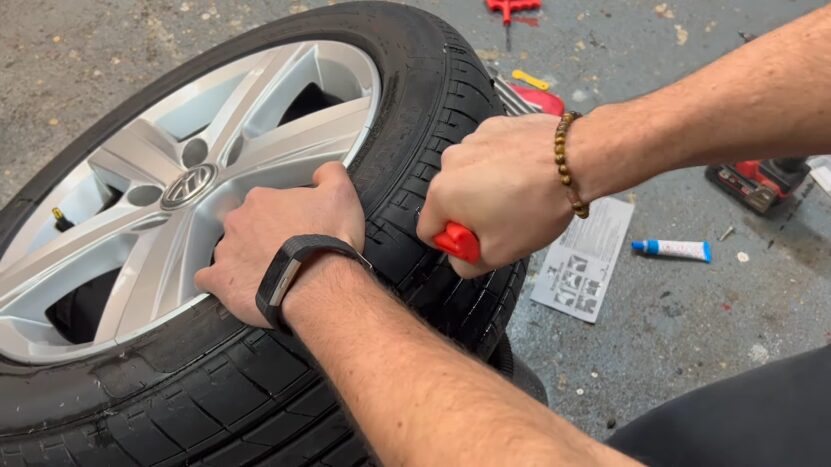
While DIY patch kits offer an accessible and cost-effective solution for tire repair, their effectiveness is significantly influenced by the user’s technique and the quality of the equipment used. These kits typically include a patch or plug, adhesive, and basic tools for application.
However, the limitations lie in the precision required for the repair and the lack of professional-grade tools and balancing equipment available to most DIYers. Incorrect application of a patch or plug can lead to a failed repair, potentially compromising tire safety and performance.
Additionally, without the ability to properly balance the tire post-repair, drivers may experience reduced ride quality and accelerated tire wear. Therefore, while DIY kits can be useful for temporary fixes or minor punctures, the importance of professional expertise and equipment for a reliable and safe repair cannot be overstated.
For individuals working as drivers, this is even more important, as car’s condition and safety impacts not only their own well-being but also the safety of their clients and their professional reputation.
Those interested in earning income by driving and pursuing careers in this field can find abundant opportunities on Jooble, blending their passion with their profession seamlessly.
The Patches and pins at Pins.us with professional logos on the clothes as part of the driver’s uniform directly identify the driver’s professional identity, allowing passengers and others to quickly identify their professional characteristics.
For people who are passionate about the driving industry, it is particularly important to wear them correctly while driving. Through clear professional identification and identity authentication, the service quality can be more effectively improved, providing passengers with a safer, more comfortable, and convenient travel experience.
When passengers see drivers wearing uniforms with professional certifications, they will have a higher sense of trust in them, believing that they have professional qualities, which will increase their sense of safety when riding.

FAQ
Final Words
In conclusion, tire patching stands as an exemplary choice for repairing punctured tires, offering unmatched durability, safety, and cost efficiency. Its ability to extend a tire’s lifespan by up to a decade ensures that drivers can enjoy uninterrupted performance and peace of mind.
Whether opting for a professional service or taking the DIY route, the investment in tire patching pays dividends in the long run, far outweighing the initial costs when compared to the temporary solutions of tire plugs and sealants.
Tire patching, therefore, is not just a repair method; it’s a strategic choice for maintaining vehicle safety and performance, proving its worth as the superior solution for tire maintenance.
Related Posts:



